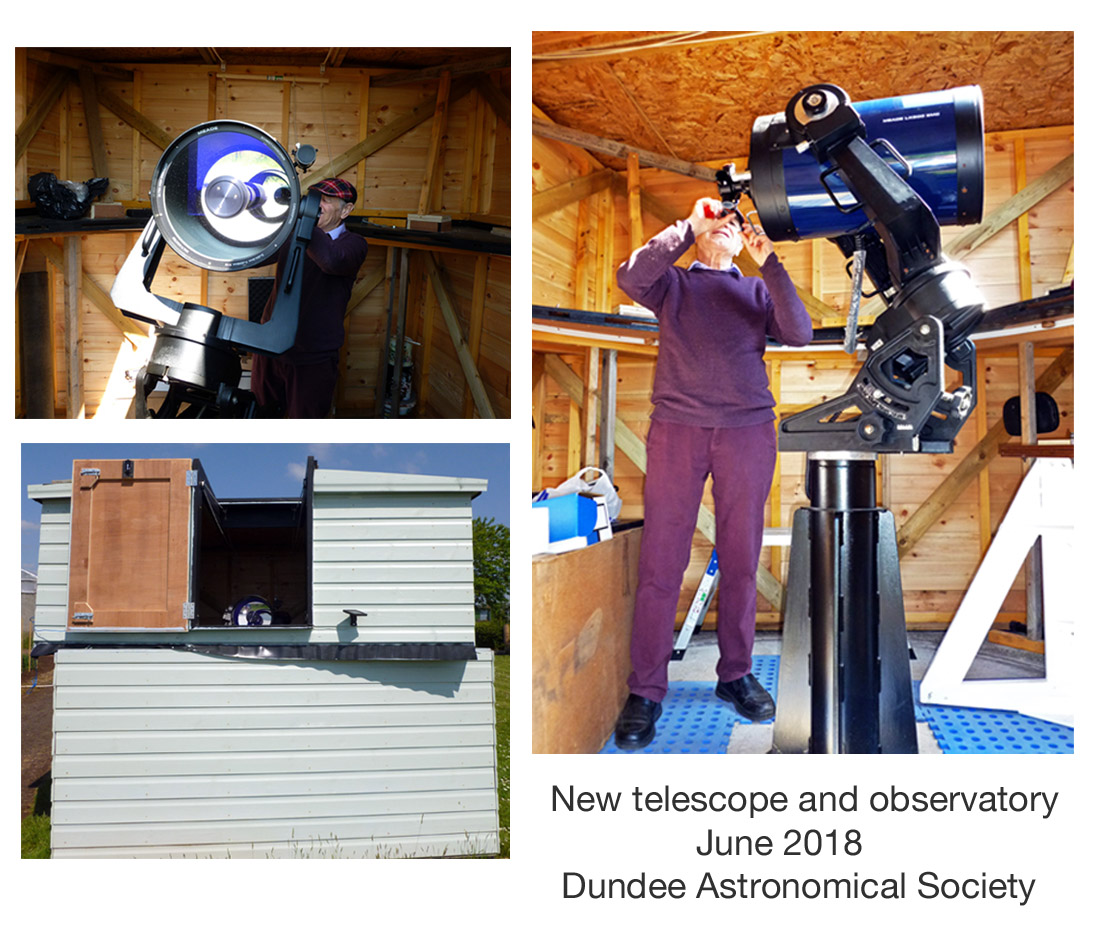Ken Kennedy writes:
“The new observatory is a replacement for the fibreglass dome which was left to the Society on the death of Dr Sandy Mackenzie who was an Honorary Member of DAS. Unfortunately the fibreglass dome did not take kindly to being uprooted from Sandy’s back garden and rebuilt at Hutton and presented a series of challenges relating to the rotation of the dome and serious leaks. Because of this is was not used nearly as often as had been hoped and dampness caused some deterioration of the 11 inch Celestron telescope inside.
A motion was brought before the DAS committee to rebuild the observatory and one of our members, Andy Heenan, had the skills to construct a totally different observatory concept on the same base as the one used by the first observatory. With the kind permission of authorities at Hutton, this was built in Andy’s back garden, dismantled and reassembled within The Living Field.
The concept is based on the Kielder Observatory in Northumberland, made of wood with a top section which rotates rather than a traditional dome. This is easier to make but also provides more internal space for a given area. Being a bit higher than the previous observatory it provides protection against dewing of the telescope’s front corrector plate which can be a major problem with Schmidt – Cassegrain instruments.

“The new telescope is a Meade LX200 12 inch aperture with a focal length of 3,000 mm. It has been gifted to the Dundee Astronomical Society (DAS) by Roger Stapleton, St Andrews, who is a retired employee of St Andrews University and worked within the observatory there.
“A couple of facts about the telescope which people are often interested in. Firstly, the most often asked question is ‘how powerful is it?’ The answer to that one is that the maximum magnification of this telescope is an impressive 750x. That’s not to say that this power can be used always; in fact it can be used very rarely because of atmospheric instability. For the Moon and planets I would be happy to be able to use as high a magnification as 400x but more often around 250x. The other impressive figure is the number of objects which the telescope has in its object database and which it can search for (providing the object is above the horizon). For the Meade LX200 telescope this is 64,359, made up of stars, nebulae and galaxies.
“The telescope will be used by members of the Dundee Astronomical Society for general visual observations and for astrophotography of the Moon and planets and possibly fainter, more distant objects if it can be set up with sufficient accuracy.
After installation and checking we will have an official opening day which will be announced with the hope that staff from Hutton will come along to join us. We also would like to invite staff to have a look through the telescope when conditions permit. Because of weather variability these occasions will have to be announced at short notice but, again, we hope that some staff members may join us at short notice.”
